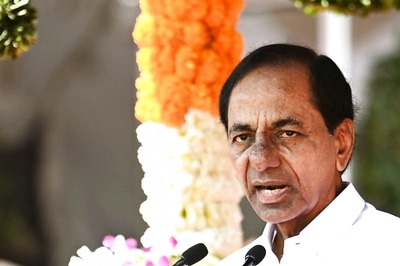
views
The National Institutional Ranking Framework (NIRF), which is scheduled to be released tomorrow, July 15, assesses Indian institutes in teaching-learning and resources, research and professional practice, graduation outcome, outreach and inclusivity, and perception. The ranks are given to colleges and universities across 10 different categories including overall ranking, college, university, management, pharmacy, engineering, medical, law, architecture, and dental colleges.
NIRF Ranking 2022 LIVE Updates
In the NIRF, Indian institutes such as IITs and IIMs are usually among the top rankers but when it comes to foreign rankings such as Quacquarelli Symonds (QS) or the Times Higher Education (THE) rankings, even the best Indian institutes fall short. Former IIT Delhi director V Ramgopal Rao had earlier stated that institutes like IIT Delhi have their “rightful place” among the global top 50 but the reason it is falling behind is because of a parameter known as the ‘perception’ index. But the Indian Ranking NIRF too will have perception as one of the key para meters this year.
QS Ranking Parameter
When it comes to QS, there are five parameters on which universities are ranked. This includes academic reputation which has 40 per cent of the overall score, and refers to teaching and research quality, employer reputation that assesses how institutions prepare students for successful careers, faculty/student ratio that assess how institutions provide students with meaningful access to lecturers and tutors, citations per faculty that measures university research quality with a citation per faculty metric, and international student ratio and international faculty ratio that depends on a varsity’s ability to attract quality students and staff from across the world implying its global outlook.
THE Parameter Ranking
The performance indicators for THE are grouped into five areas — teaching (learning environment), research (volume, income and reputation), citations (research influence), international outlook (staff, students and research), and industry income (knowledge transfer). While the first three parameters each has 30 per cent of the total weightage, international outlook (staff, students, research) has 7.5 per cent, and industry income has 2.5per cent weightage.
Perception index in NIRF
For the NIRF, out of the total 100 per cent, 30 per cent weightage is given to teaching, learning and resources and research and professional practice each. While 20 per cent weightage has been given to graduation outcomes, 10 to outreach and inclusivity and perception each.
The perception index, also known as PR, refers to academic peers and employers. “This is to be done through a survey conducted over a large category of employers, professionals from reputed organisations and a large category of academics to ascertain their preference for graduates of different institutions,” reads the official information brochure. A comprehensive list is prepared taking into account various sectors, regions, etc. For universities in the PR parameter, 70 per cent weight is given to peer perception and 30 per cent to accreditation.
Meanwhile, there has been an increase in the number of participating colleges in NIRF 2022. A total of 7254 higher educational institutes have participated this year. In NIRF 2021, as many as 6272 institutes took part. IIT Madras grabbed the first position in the overall category while IIM Ahmedabad topped in the management category and AIIMS New Delhi took the top rank in medical category. Miranda College grabbed the first position amongst colleges.
Read all the Latest News, Breaking News, watch Top Videos and Live TV here.



















Comments
0 comment